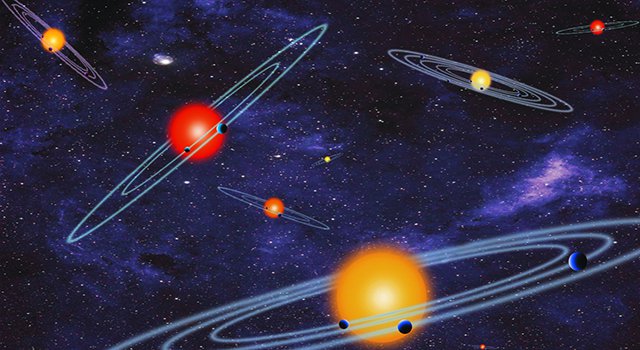A team of researchers from Penn State and Osaka University has uncovered a surprising addition to the planetary system Kepler-51, known for its trio of ultra-low-density “super-puff” planets.
While observing Kepler-51d, the third planet in the system, using NASA’s James Webb Space Telescope (JWST), the team discovered an unexpected anomaly: the planet transited its star two hours earlier than predicted by existing models.
Through detailed analysis of new and archival data from various space- and ground-based telescopes, the researchers concluded that a previously undetected fourth planet was exerting gravitational influence, altering the orbits of the known planets. This groundbreaking finding was published in the Astronomical Journal on December 3.
A Unique Planetary Puzzle
“Super-puff planets are unusual due to their incredibly low density,” explained Jessica Libby-Roberts, a postdoctoral fellow at Penn State’s Center for Exoplanets and Habitable Worlds and co-first author of the study. “The three known planets orbiting Kepler-51 are roughly the size of Saturn but only a few times the mass of Earth, giving them a density akin to cotton candy.
These planets likely have small cores enveloped by massive atmospheres of hydrogen or helium. However, understanding how these planets formed and retained their atmospheres despite their young star’s intense radiation remains an open question.”
The team initially planned to use JWST to study one of these planets to explore these mysteries. Instead, they were faced with the challenge of accounting for a fourth, low-mass planet in the system.
Transit Timing Variations Reveal a Fourth Planet
When planets transit their star, they cause a measurable dip in brightness. Astronomers use the timing of these transits to model planetary orbits. Minor deviations, known as transit timing variations (TTVs), occur when gravitational forces from other planets in the system influence their timing.
The researchers had relied on a three-planet model to predict transits in the Kepler-51 system, which had worked reliably in previous observations. However, during an observation campaign in June 2023, the predicted transit of Kepler-51d at 2 a.m. EDT did not occur on schedule.
“Thankfully, we started observing early to establish a baseline,” Libby-Roberts said. “At 2 a.m., nothing happened. At 3 a.m., still nothing.
Eventually, we noticed a slight dip in brightness just as we began our observations. The transit occurred two hours earlier than expected — a discrepancy too large for our three-planet model to explain.”
Confirming Kepler-51e
Further analysis of JWST and Apache Point Observatory (APO) data revealed that only a fourth planet, Kepler-51e, could account for the observed irregularities. This marks the first planet discovery using TTVs observed with JWST.
“Adding a fourth planet to the model was the only way to explain the data,” said Kento Masuda, an associate professor at Osaka University and co-first author of the study. “Kepler-51e likely has a mass similar to the other planets and a circular orbit of approximately 264 days. Alternative explanations involving a more massive planet on a wider orbit are less plausible.”
Implications and Future Exploration
The discovery of Kepler-51e also led to adjustments in the estimated masses of the other planets, slightly increasing their values while keeping them classified as super-puffs. However, whether Kepler-51e shares the same characteristics remains unclear since it has not been observed transiting its star.
“Super-puff planets are rare, and finding three in one system was already challenging to explain. Now we must account for a fourth planet — and possibly more,” Libby-Roberts noted.
Given Kepler-51e’s estimated orbit, which is near the star’s habitable zone, researchers plan additional observations to understand its gravitational effects on the system. These studies could reveal more distant planets or offer insights into conditions that might support life.
The team is also analyzing JWST data to study the atmosphere of Kepler-51d, which could provide crucial information about how these unusual low-density planets formed and evolved.
“Exploring transit timing variations further could help us uncover planets beyond Kepler-51e and improve our understanding of super-puff planets and their origins,” Libby-Roberts concluded.


